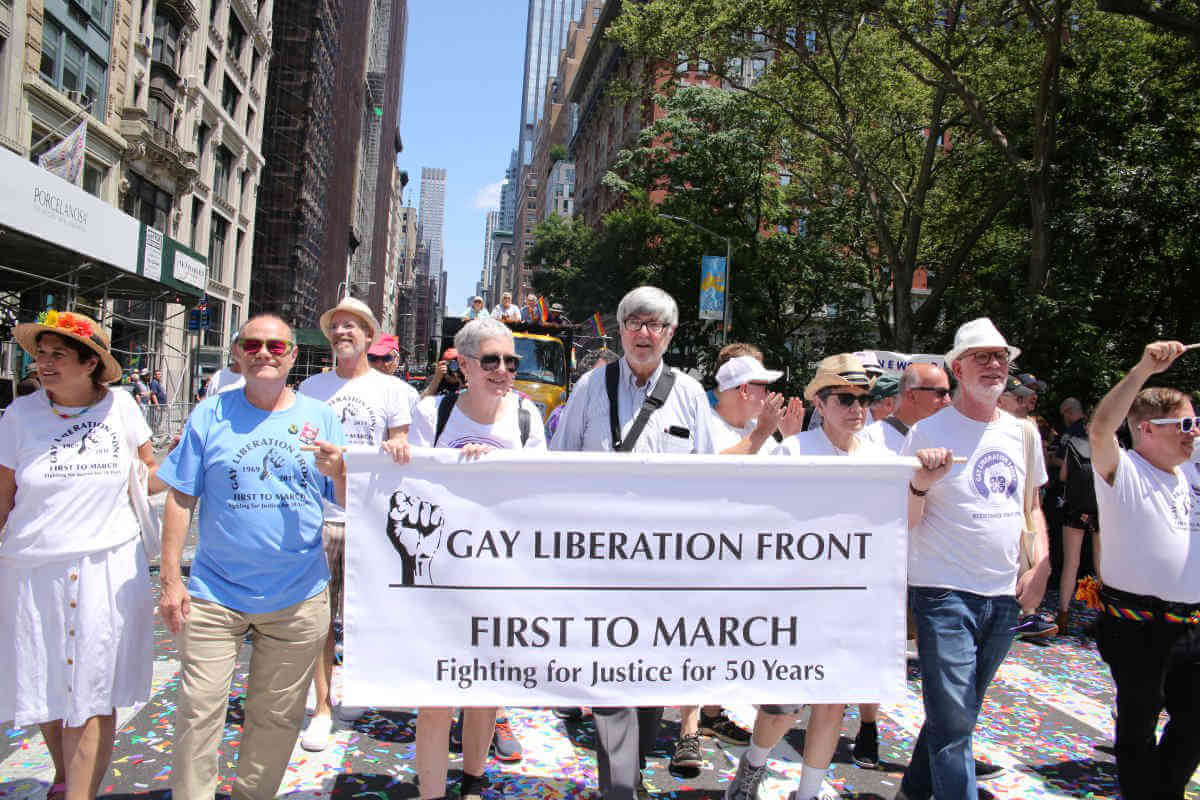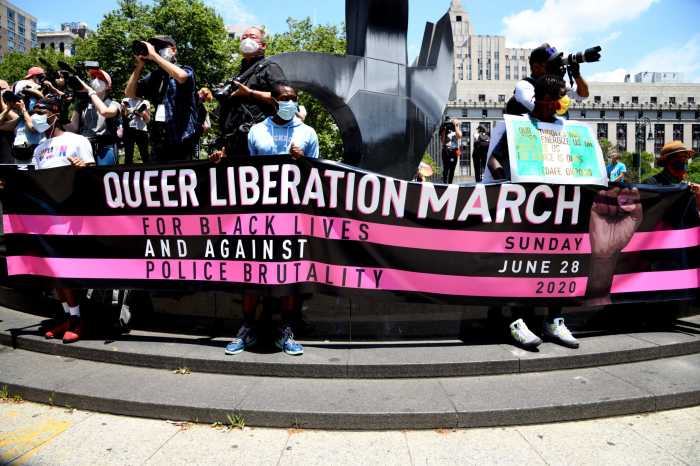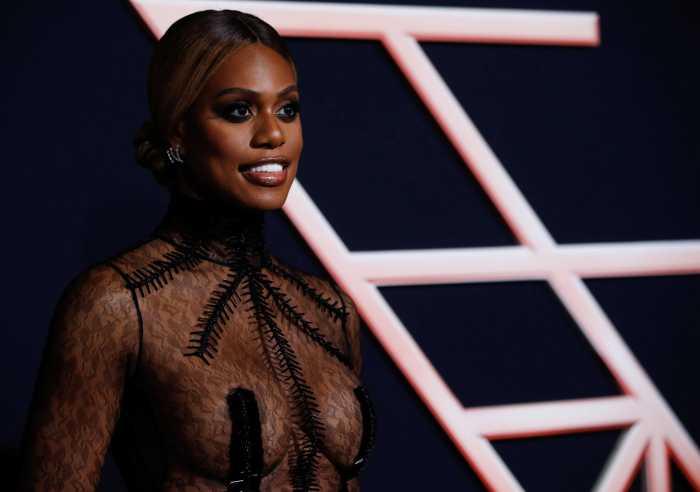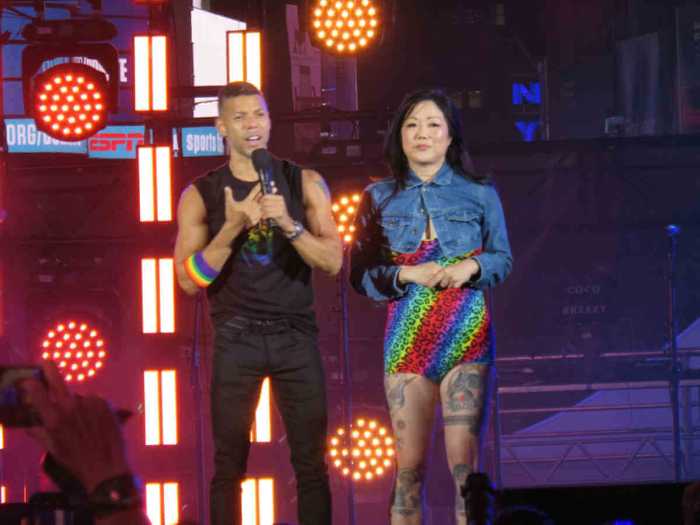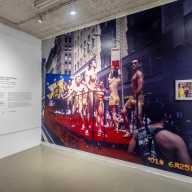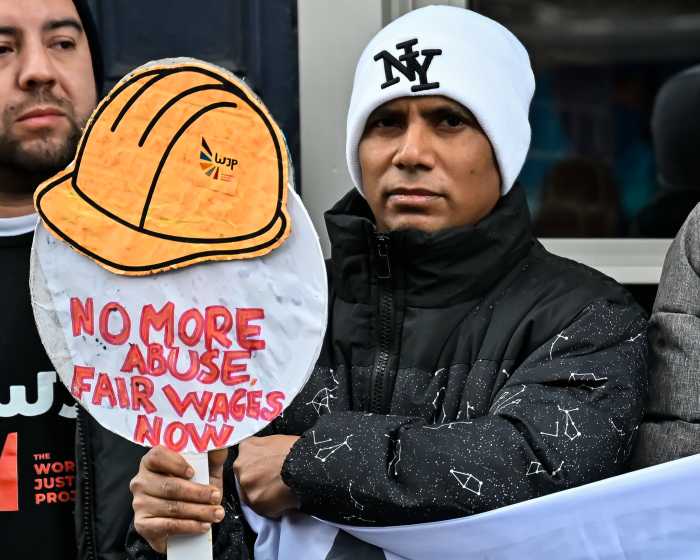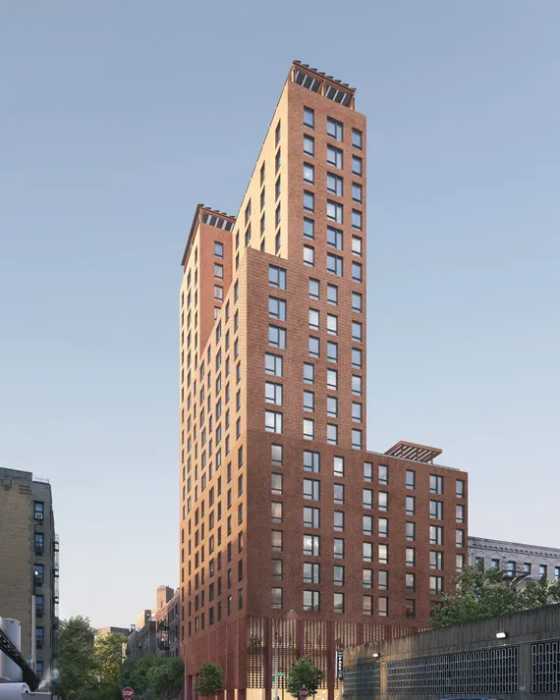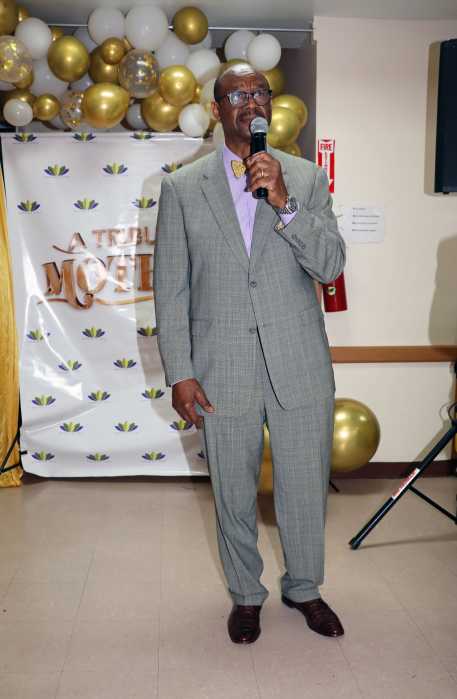Surviving members of the Gay Liberation Front gathered together at WorldPride on June 30 in the city where they seized the momentum of the Stonewall Uprising and pioneered the modern LGBTQ rights movement five decades ago.
Some members of that organization took part in the Reclaim Pride Coalition’s Queer Liberation March, while others participated in Heritage of Pride’s (HOP) march, where GLF served as a grand marshal. A select few planned on participating in both events on the same day.
“It’s been an amazing journey for 50 years that started basically in a rec room in a church where the Gay Liberation Front met,” said Perry Brass, who joined the organization in 1969 and played a key role in leading the organization’s newspaper, dubbed Come Out. “There were about 100 of us.”
GLF was known to advocate for LGBTQ rights with a strong emphasis on intersectionality and freedom of expression. They allied themselves with leftist groups of the time, from the Black Panthers to anti-war groups and feminists, under the common goal of advancing issues of social justice that still resonate to this day.
Multiple GLF members who were taking part in the WorldPride festivities noted the explosive difference between the first gay liberation march in 1970 and the WorldPride event of 2019, which was the largest in the world.
“To begin with, there was no Pride,” Brass said at Madison Square Park just moments before the GLF contingent stepped off at the HOP march. “It began with the Christopher Street Day Liberation March and it was gay liberation week in New York. We claimed this whole week and the march would be the culmination of it. All these young people came in. We fed them and found places for them to stay. There was almost no press coverage of that week. The only press coverage we had was from the international press.”
Kathleen Wakeham, a GLF alum who found out about the organization while she was attending Columbia University on a part-time basis, described it as a “breath of fresh air” and said “none of this would have happened” this year without the activism of that era.
“We were just a bunch of straggling kids who didn’t want our lives to be invaded or be fired at work,” said Wakeham, who also opted to attend the main HOP march. “We didn’t want to be assaulted when we walked down the street, which happened to me quite a few times. To see all of this is really amazing, it’s wonderful.”

She added, “We felt we were on the verge of a revolution because we were all leftists and we felt either you do something or you stay at home and cry. Some of our slogans were, ‘Get out of the closet and into the streets.’ Because if you stay in the closet, nothing happens.”
Some ideological differences among the GLF members emerged when they spoke about why they decided to march in either the HOP march or Reclaim Pride’s Queer Liberation March, which was organized by folks who grew frustrated with the growing corporate and police presence at an annual march that was originally sparked by police brutality at Stonewall.
Ellen Shumsky, who witnessed the events of Stonewall and subsequently joined GLF as a photographer, spent her day marching in the Queer Liberation March, which started at Sheridan Square at 9:30 a.m. and concluded with a 1 p.m. rally at Central Park. That march had a strong activist vibe and featured a cross-section of people who put the spotlight on marginalized groups like trans women of color and sex workers.
“For the last number of years, I have found the other march to be very unappealing,” said Shumsky, who delivered a speech at the afternoon rally about coming of age as a lesbian and her involvement in GLF and other groups. “I don’t like the commercialization of it and I feel like it’s become a big party. It’s just lost the political energy of the earlier movement. When I heard about Reclaim Pride, I said, ‘That’s for me.’”
Other GLF members offered different perspectives of the marches. Wakeham and Jason Victor Serinus, who launched GLF’s chapter in New Haven, Connecticut, defended HOP even as they acknowledged the way things have changed over the years.
“The first march had no corporate floats and all that. As I’ve gotten older, I don’t see things in black and white,” Serinus said while pointing to examples of other ways he has straddled the fence on certain issues: At times, he has pushed back against police in demonstrations, but at other times he has supported police. “I begin to see nuanced arguments. I think the Reclaim march is fine. I don’t agree with it totally. I also know you can’t do this without corporate sponsorship.”
Wakeham, meanwhile, argued that large companies supporting Pride can lead to more support from allies.
“They say, ‘Oh, this is a corporate march.’ But if a corporation is sponsoring our march, they cannot fire us,” she said. “Straight people around here too can see that we don’t have horns and a tail.”

Regardless of some differences, GLF members still stood together and echoed each other’s sentiments when they reminisced about their activism. They expressed sadness as they invoked the GLF members who have since died, saying those folks would have been proud to see everyone together again. But they also seized the moment — a rare one in which they all could gather and remember the times they changed the world for the better.
Shumsky described it as “like a family reunion” and Wakeham said it especially felt good to catch up with the others because so much time passed. It also held special meaning for Serinus, now 74, after he missed previous reunions.
“ It’s thrilling,” he said. “To see so many of us here is wonderful.”
Fifty years after Stonewall and 49 years after the first major LGBTQ rights march, multiple members admitted, however, that the work is far from over. Indeed, the legalization of same-sex marriage in recent years represented a step forward, but that was a step that they believe was incremental — especially considering that the nation still does not have federal LGBTQ nondiscrimination protections and numerous nations around the world still criminalize people for their sexual orientation or gender identity.
“I would like to see a situation where all the LGBT people who are not in a middle class marriage are taken care of, too,” Brass said. “I want to see all of us are taken care of. This necessity is international.”
Wakeham emphasized employment and housing as two major queer issues in light of LGBTQ youth homelessness and broader housing discrimination against same-sex partners — especially LGBTQ seniors — as well as employment discrimination.
“I hope there’s a national gay rights movement not to be fired from your job or housing,” she said.
But for a brief moment this past Sunday, GLF members who participated in the HOP march huddled together at the northeast corner of Madison Square Park and acknowledged the progress they made and the advancements that followed after they laid the groundwork for future activists. To this day, others are building on the backs of their work.

“Stonewall was the spark that lit the torch that was the Gay Liberation Front, and from Gay Liberation Front other groups came out,” Brass said. “I firmly believe — and history will show — that we created the gay revolution.”

